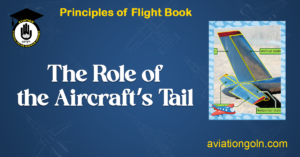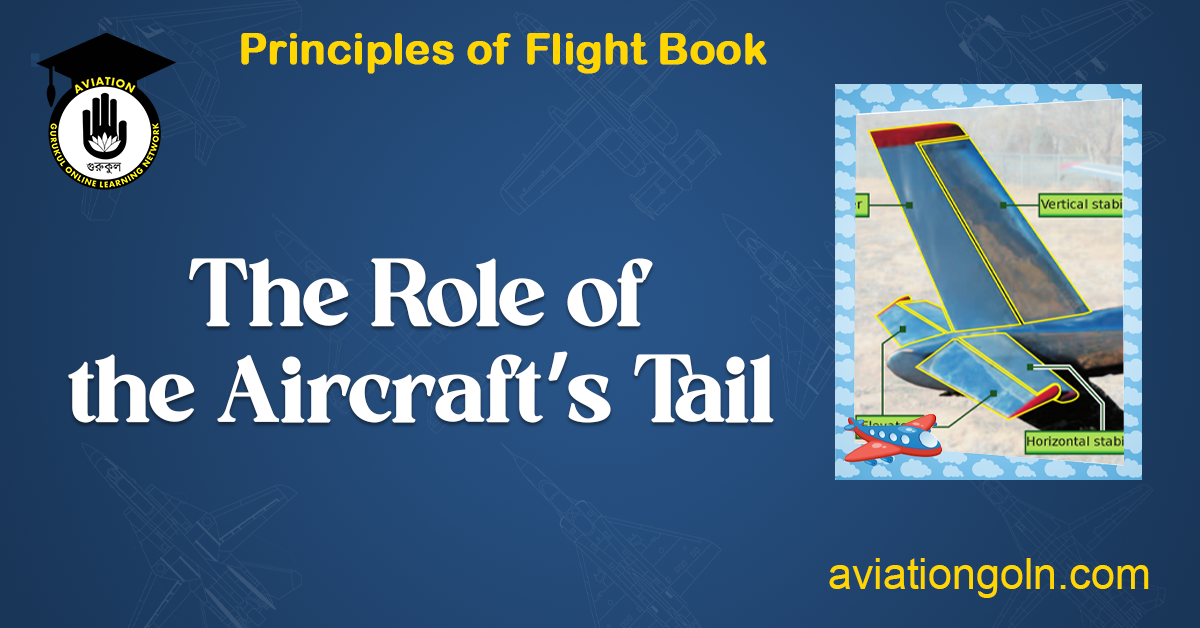The tail of an aircraft, often referred to as the empennage, plays a crucial role in the stability and control of the aircraft. While the wings generate lift and the engines provide thrust, the tail ensures that the aircraft remains stable in flight and can be maneuvered accurately by the pilot. In this essay, we will delve deep into the principles that underlie these functions of the aircraft’s tail.
The Role of the Aircraft’s Tail

1. Components of the Tail
The empennage generally consists of:
- Vertical Stabilizer (Fin): This is the upright part of the tail, which gives the aircraft yaw stability.
- Horizontal Stabilizer: Located at the base of the fin, it ensures pitch stability.
- Rudder: Attached to the trailing edge of the vertical stabilizer, the rudder allows the pilot to control the yaw motion.
- Elevators: These are located on the trailing edge of the horizontal stabilizer and are used to control pitch.
2. Aerodynamic Principles
When an aircraft is in flight, it can rotate about three axes: longitudinal (roll), lateral (pitch), and vertical (yaw). The tail plays an instrumental role in maintaining stability around these axes and providing control authority.
Longitudinal Stability (Roll): Although primarily governed by the wing dihedral, the tail’s location far from the aircraft’s center of gravity gives it a significant influence over roll stability.
Lateral Stability (Pitch): The horizontal stabilizer and elevators mainly control this. The stabilizer provides a restoring force if the aircraft’s nose moves up or down, while the elevators provide the pilot with pitch control.
Directional Stability (Yaw): The vertical stabilizer and rudder manage this. When the aircraft’s nose moves left or right (yawing motion), the vertical stabilizer, due to its aerodynamic shape and position, provides a force to bring the nose back to its original position.
3. Principles of Stability
- Positive Stability: If, when disturbed from its equilibrium position, the aircraft returns to its original position over time, it exhibits positive stability.
- Neutral Stability: If the aircraft remains in the new position after being disturbed, it has neutral stability.
- Negative Stability: An aircraft is said to have negative stability if, when disturbed, it continues to move further away from its original position.
4. The Tail’s Role in Stability
a. Directional Stability (Yaw): The vertical stabilizer provides a surface area behind the aircraft’s center of gravity. If the aircraft yaws to one side, the vertical stabilizer experiences an increased airflow on one side and a reduced airflow on the other. This differential airflow creates a restoring force, pushing the aircraft back to its initial position.
b. Lateral Stability (Pitch): The horizontal stabilizer operates on a similar principle but in the pitch axis. If the aircraft’s nose rises, the increased angle of attack on the stabilizer creates a downward force on the tail, pushing the nose back down. Conversely, if the nose drops, the tail rises.
5. Control Surfaces and their Functions
a. Elevators: The elevators control the aircraft’s pitch. When the pilot pulls back on the control column, the elevators rise, increasing their angle of attack. This generates a downward force on the tail, making the aircraft’s nose rise. Conversely, when the control column is pushed forward, the elevators drop, creating an upward force on the tail and causing the aircraft’s nose to descend.
b. Rudder: The rudder controls the aircraft’s yaw. When the pilot uses the rudder pedals, the rudder deflects left or right. A deflected rudder increases the drag on one side of the tail, which results in a yawing motion in the same direction.
6. T-Tails and Conventional Tails
While most aircraft have a conventional tail configuration, where the horizontal stabilizer is attached at the base of the vertical stabilizer, some have a T-tail, where the horizontal stabilizer is at the top of the vertical stabilizer. T-tails can have advantages in certain scenarios, like reducing the effects of engine blast on the stabilizer or avoiding ground obstacles. However, they can also be more susceptible to specific aerodynamic issues like deep stall conditions.
7. Trim and Balance
Trimming an aircraft ensures that it flies level without continuous input from the pilot. On the tail, trim tabs, which are small, movable sections on the trailing edge of the elevators and rudder, achieve this. By adjusting these tabs, pilots can balance out any persistent forces that would otherwise require constant control inputs.
8. The Evolving Role of the Tail in Modern Aircraft
With advancements in technology, the role of the tail has seen certain evolutions. Fly-by-wire systems in modern aircraft can adjust control surfaces in real-time, enhancing stability and control. In some cutting-edge designs, there’s even a discussion about blended body aircraft, where the distinction between wings and the body (and potentially the tail) is minimized.
Conclusion
The tail of an aircraft, while not as celebrated as engines or wings, plays a pivotal role in ensuring that aircraft fly safely, stably, and responsively. Its aerodynamic surfaces, leveraging principles of aerodynamics and physics, keep the aircraft balanced and in control. As aviation technology continues to evolve, the role and design of the tail will undoubtedly adapt, but its fundamental importance to flight stability and control will remain.
